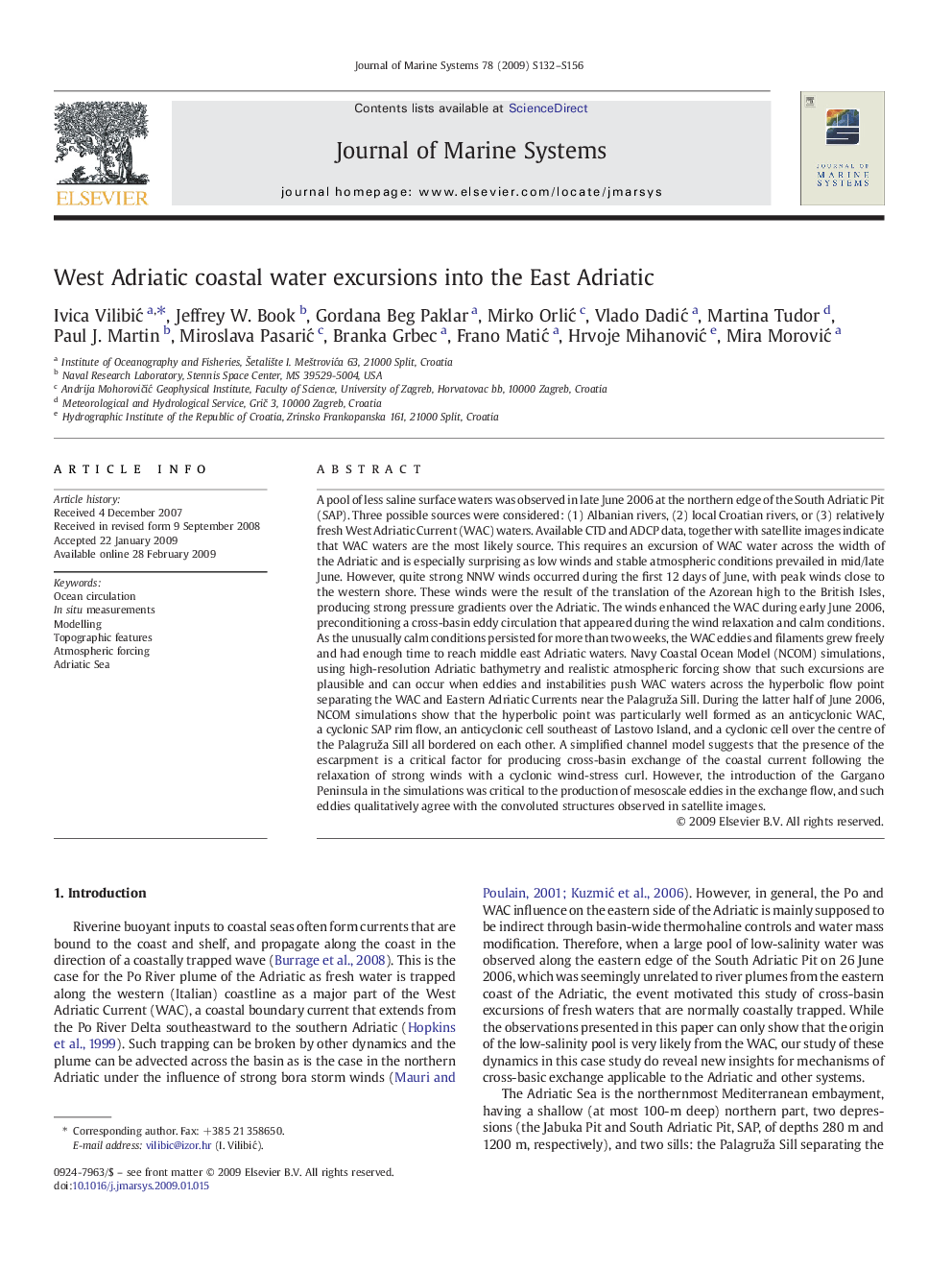| Article ID | Journal | Published Year | Pages | File Type |
|---|---|---|---|---|
| 4548940 | Journal of Marine Systems | 2009 | 25 Pages |
Abstract
A pool of less saline surface waters was observed in late June 2006 at the northern edge of the South Adriatic Pit (SAP). Three possible sources were considered: (1) Albanian rivers, (2) local Croatian rivers, or (3) relatively fresh West Adriatic Current (WAC) waters. Available CTD and ADCP data, together with satellite images indicate that WAC waters are the most likely source. This requires an excursion of WAC water across the width of the Adriatic and is especially surprising as low winds and stable atmospheric conditions prevailed in mid/late June. However, quite strong NNW winds occurred during the first 12 days of June, with peak winds close to the western shore. These winds were the result of the translation of the Azorean high to the British Isles, producing strong pressure gradients over the Adriatic. The winds enhanced the WAC during early June 2006, preconditioning a cross-basin eddy circulation that appeared during the wind relaxation and calm conditions. As the unusually calm conditions persisted for more than two weeks, the WAC eddies and filaments grew freely and had enough time to reach middle east Adriatic waters. Navy Coastal Ocean Model (NCOM) simulations, using high-resolution Adriatic bathymetry and realistic atmospheric forcing show that such excursions are plausible and can occur when eddies and instabilities push WAC waters across the hyperbolic flow point separating the WAC and Eastern Adriatic Currents near the Palagruža Sill. During the latter half of June 2006, NCOM simulations show that the hyperbolic point was particularly well formed as an anticyclonic WAC, a cyclonic SAP rim flow, an anticyclonic cell southeast of Lastovo Island, and a cyclonic cell over the centre of the Palagruža Sill all bordered on each other. A simplified channel model suggests that the presence of the escarpment is a critical factor for producing cross-basin exchange of the coastal current following the relaxation of strong winds with a cyclonic wind-stress curl. However, the introduction of the Gargano Peninsula in the simulations was critical to the production of mesoscale eddies in the exchange flow, and such eddies qualitatively agree with the convoluted structures observed in satellite images.
Keywords
Related Topics
Physical Sciences and Engineering
Earth and Planetary Sciences
Oceanography
Authors
Ivica VilibiÄ, Jeffrey W. Book, Gordana Beg Paklar, Mirko OrliÄ, Vlado DadiÄ, Martina Tudor, Paul J. Martin, Miroslava PasariÄ, Branka Grbec, Frano MatiÄ, Hrvoje MihanoviÄ, Mira MoroviÄ,
